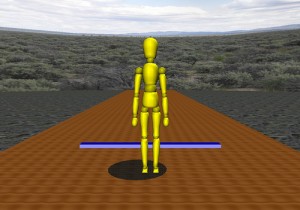
So, since we’ve moved into the new place, I’ve been wanting to consolidate my technology somewhat and make things a lot easier to administer. To this end (and forgetting for a moment the lack of structured home cabling – which I’m still working on) I’ve decided to resurrect one of my lower powered (in wattage, not horsepower) machines – and turn it into a Virtual Server from which I will run the multiple hosts which have been sitting on independent hardware until the move.
Things haven’t exactly gone without a hitch, but I’ve learned a lot along the way – which I probably could have learned if I spend more time researching before I spent time doing, but meh. I’m a kinisthetic kinda guy, so – here’s what I’ve learned in my ‘travels’ hopefully it may be of some use to you.
Hardware
Your hardware choice (or lack thereof) will be a major determining factor in which platform(s) will be available to you. Unfortunately for me, I’m using a fairly archaic Shuttle XPC Sn95G5 [Review] which, while it runs fine – lacks the features that the latest and greatest virtualisation environments utilise.
As with most things, more is better. While virtulisation is all about how you use it and not how much you have, you will still be sharing slices of whatever sized PC pie you can bring to the table (or server cabinet), so spec your machine as high as you can afford in terms of CPU, RAM and Power Consumption. The power consumption side of the equation is oft overlooked, but certainly worthy of attention as, not only will this box be on as close to 24x7x365.24 as you can keep it, it will also be contributing to the heat and noise output in whatever room you decide to leave it.
Operating System
A number of the virtualisation environments I’ve looked at are handy in that they are built into an optimised Linux distribution – so there’s one choice that you do not (cannot) make. But, for the others – and given the limitations of my hardware – I’ve opted for a minimal, headless server – and my operating system of choice will be Ubuntu 9.04 – I will be posting an article to follow this one which will detail my build – I will link to it here.
Virtulisation Environment
Here’s where the fun began for me. I’ve used a number of environment as part of my day to day work – but what has been interesting over the past few years is the number of environments which have ‘gone free’. Because of this, I felt compelled to try something new which I’d not installed or used before and go from there, after all VMs (Virtual Machines) are VMs right?…. right?
WRONG!
But I’ll explain why in the following articles:
- Setting Up Ubuntu Server 9.04
- Installing VMware Server 2.0.1 on Ubuntu Server 9.04
- Installing VirtualBox 3.0.2 on Ubuntu Server 9.04
- Installing Xen
- Installing OpenVZ
Plus the build of a couple of VMs, starting with:
- Building a Proxy Server VM with Squid, ClamAV, DansGuardian
Comments
One response to “Setting Up a Virtual Environment”
[…] will address the base (minimal) build that I’ve been using while trying out a number of Virtual Environments for use in my home network. I’ve chosen to use an Ubuntu Server v9.04 (Jaunty) as my base OS – partiallybecause I […]